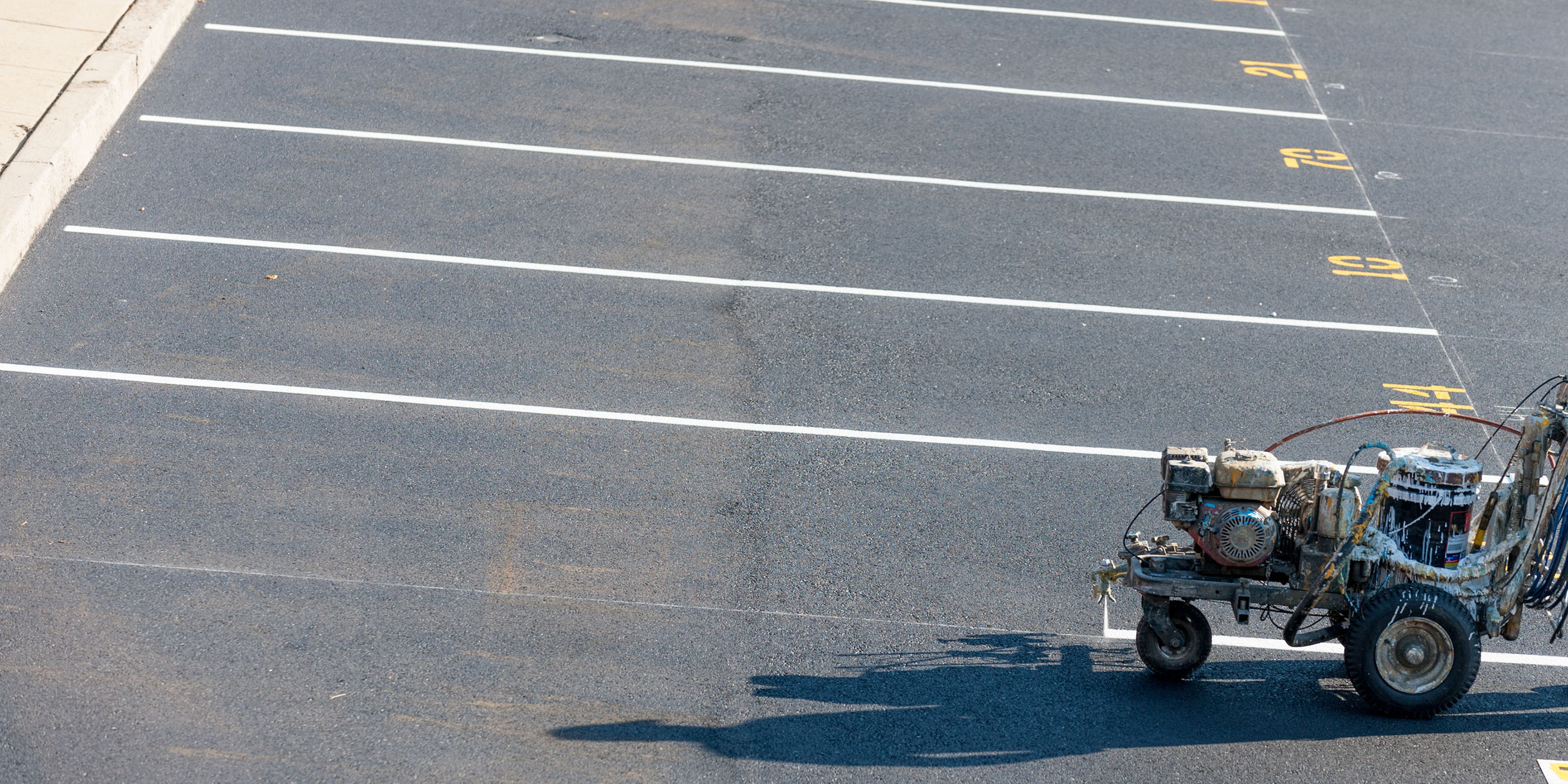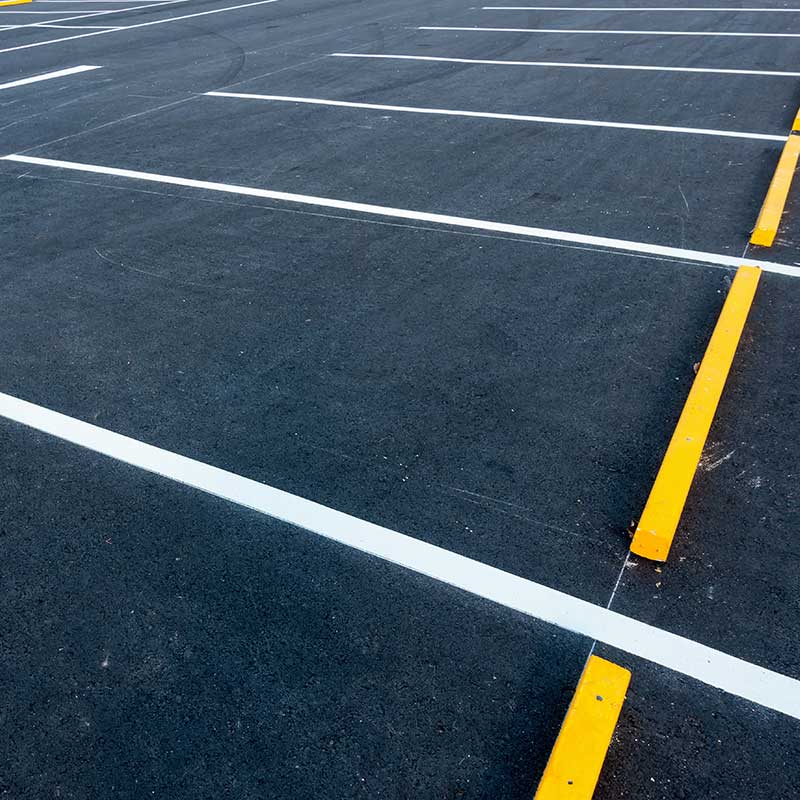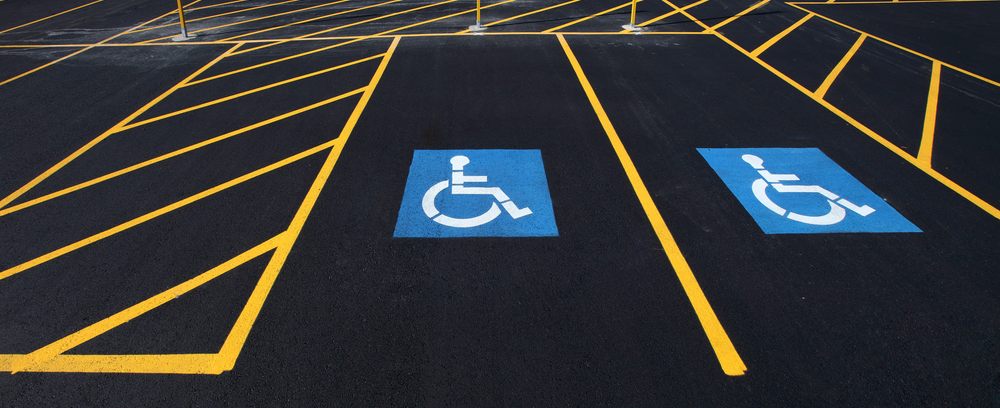Professional Pavement Marking Solutions That Ensure Safety and Compliance for Every Project
Professional Pavement Marking Solutions That Ensure Safety and Compliance for Every Project
Blog Article
A Comprehensive Overview to the most effective Practices in Roadway Painting for Public Highways
It is crucial to consider not only the immediate effect of road markings however likewise their long-lasting upkeep and presence under differing ecological problems. Recognizing these variables can significantly affect the effectiveness of roadway markings, yet many are unaware of the subtleties involved.
Importance of Roadway Paint
Roadway paint plays a crucial role in keeping website traffic safety and efficiency, with researches suggesting that well-marked roads can minimize mishaps by as much as 30%. The clear distinction of lanes, pedestrian crossings, and various other essential markings offers to assist motorists and pedestrians, promoting a predictable setting when driving. This predictability is crucial for reliable navigation and helps minimize complication, which can commonly result in accidents.
In addition, roadway markings contribute in communicating essential details, such as rate limits and directional advice. They improve visibility, specifically in damaging weather or throughout nighttime driving. The existence of reflective products in roadway paints further boosts exposure, permitting motorists to discern essential markings that influence their behavior when driving.

Choosing the Right Products
Selecting ideal materials for roadway painting is essential to attaining efficient and durable markings. The option of products directly affects the presence, durability, and safety of roadway markings. Common choices include water-based paints, solvent-based paints, and thermoplastic products, each with distinct homes and applications.
Water-based paints are eco-friendly, quick-drying, and ideal for many climate problems, making them perfect for city settings. Nevertheless, they might require more constant maintenance because of damage. Solvent-based paints, while offering exceptional attachment and sturdiness, can posture ecological and health worries as a result of unpredictable organic compounds (VOCs)
Thermoplastic products are significantly popular due to their durability and resilient efficiency. These products are warmed prior to application, enabling a strong bond with the pavement. Their reflective homes improve presence, specifically during the night.
When picking products, variables such as website traffic quantity, environment problems, and the details sort of roadway need to be considered. Conducting comprehensive research study and consulting with producers can assist guarantee that the chosen materials meet local regulations and standards, inevitably adding to more secure roads and enhanced chauffeur awareness.
Effective Application Techniques
Effective application strategies play a vital role in making certain that road markings accomplish optimal efficiency and durability. This strategy minimizes overspray and makes certain that the paint is applied evenly, which is necessary for keeping road safety and security.
Before application, it is essential to prepare the surface sufficiently. This consists of cleaning up the road of particles, oil, and moisture to improve attachment. Additionally, temperature level and moisture ought to be taken into consideration during the application process to attain the most effective results.
Making use of the appropriate devices is additionally vital. Line stripers outfitted with adjustable widths enable precise markings that adhere to governing criteria. Additionally, it is vital to adjust the equipment on a regular basis to make certain consistency in paint thickness.
Timing and Ecological Factors
Proper timing and factor to consider of environmental variables are necessary for the successful application of road markings. The performance of roadway paint largely relies on temperature, wind, and humidity problems at the time of application. Preferably, temperatures should be in between 50 ° F and 85 ° F(10 ° C to 29 ° C) for optimum attachment and curing. When temperatures are also reduced, paint may not cure effectively, bring about premature wear and decreased visibility.
Humidity levels also play a critical duty; high humidity can prevent drying times, while exceedingly dry problems may trigger rapid dissipation of solvents, affecting the paint's efficiency. Wind can present pollutants and particles, potentially endangering the quality of the markings. It is a good idea to choose calm days for application.

Additionally, considering seasonal variants is vital. As an example, road paint throughout wet periods might result in washouts, while extreme warmth can trigger paint to blister. Scheduling paint jobs during desirable climate conditions can significantly boost the durability and effectiveness of roadway markings. By very carefully evaluating these variables, companies can ensure that roadway markings are applied effectively and maintain their exposure and sturdiness with time.
Maintenance and Durability Approaches

One reliable technique is to implement a methodical painting program based on website traffic volume and ecological elements - Road painting near me. Greater web traffic locations may need more constant maintenance to neutralize the erosive impacts of lorries and weather condition problems. Additionally, using sturdy materials, such as thermoplastic and epoxy paints, can dramatically like it extend the life expectancy of roadway markings
Cleaning roadway surface areas to remove particles and pollutants is one more important element of upkeep. This guarantees ideal attachment of brand-new paint and enhances the overall efficiency of the markings. In addition, employing advanced innovations, such as computerized radar, can streamline the monitoring process and enhance maintenance routines.
Including these approaches will certainly not just boost the presence and safety and security of roadway markings yet additionally lower lasting prices linked with constant repainting and fixings. (Line painting Abbotsford)
Conclusion
View Line painting Abbotsford in a full screen map
In summary, applying ideal techniques in road painting is important for improving safety and efficiency on public highways. The selection of ideal products, incorporated with reliable application methods and consideration of ecological factors, adds to the sturdiness and visibility of roadway markings. Routine maintenance and inspections better prolong the lifespan of these markings, inevitably minimizing mishaps and improving general road use. Abiding by these guidelines promotes safer driving problems and helps with smoother traffic circulation.
The presence of reflective products in roadway paints even more enhances presence, enabling vehicle drivers to discern essential markings that influence their habits on the road.
Choosing ideal products for roadway painting is necessary to attaining effective and resilient markings.While the preliminary application of roadway markings is crucial, continuous upkeep approaches are equally essential to guarantee their long life and visibility. Additionally, the use of long lasting products, such as polycarbonate and epoxy paints, can significantly prolong the life expectancy of roadway markings.
The option of ideal products, combined with effective application techniques and consideration of environmental elements, contributes that site to the toughness and presence of roadway markings.
Report this page